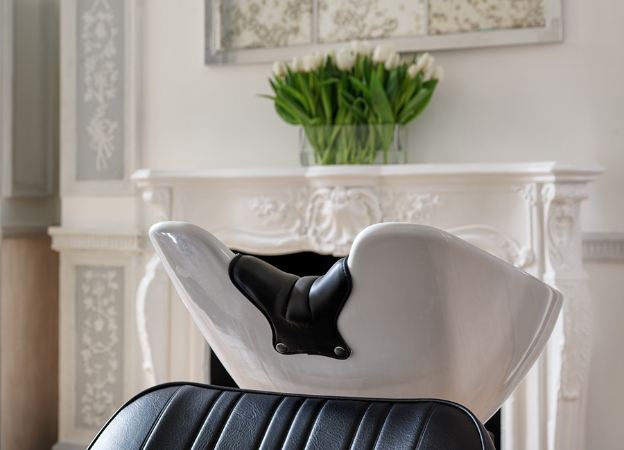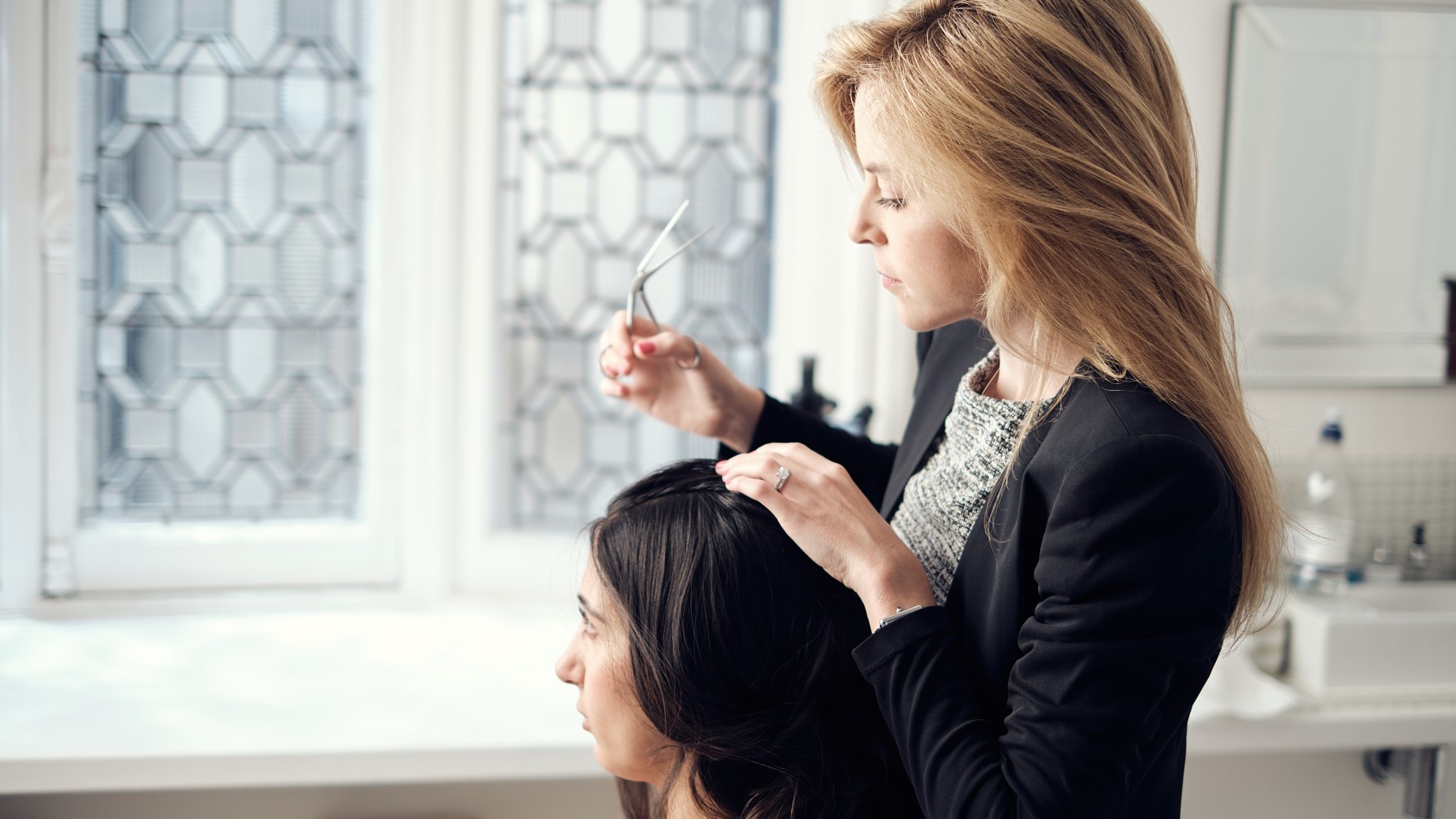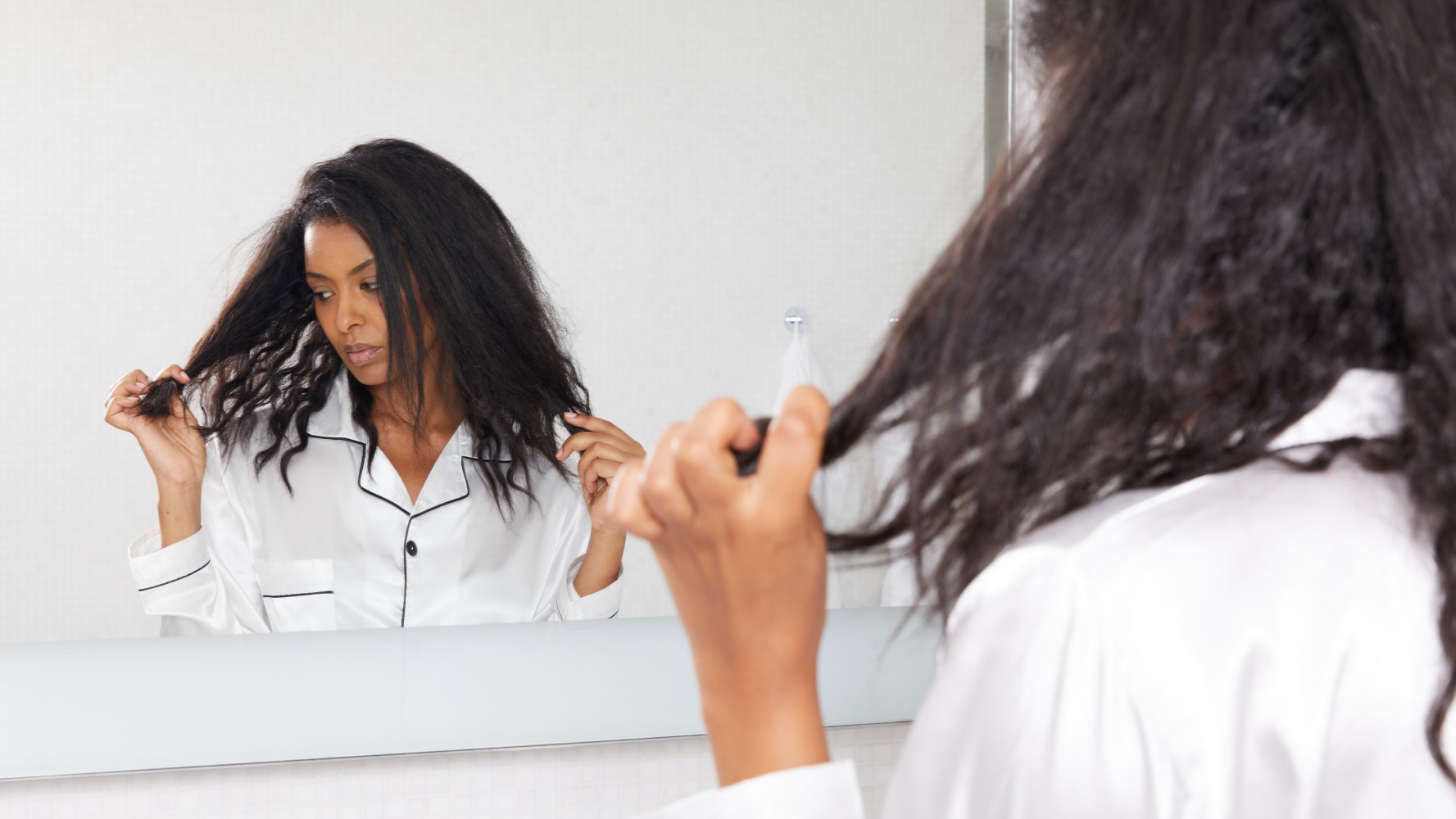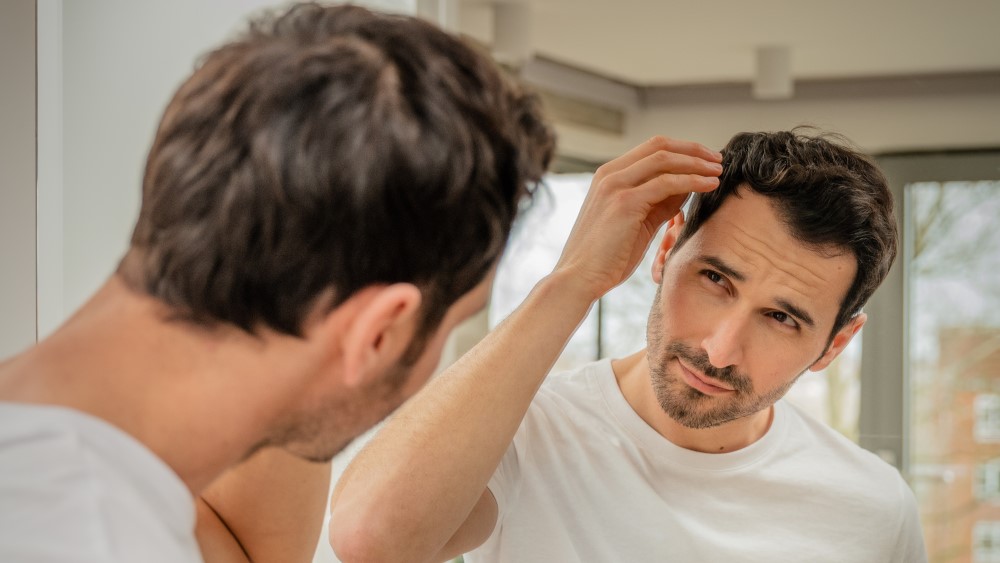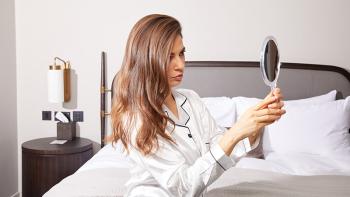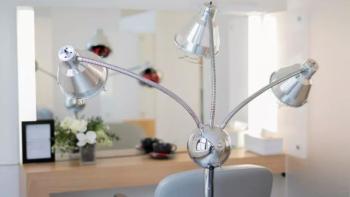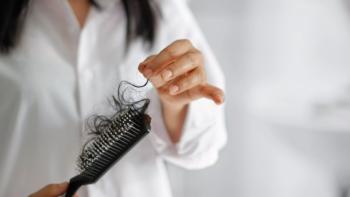These are usually circular, and are often about the size of a coin, although they can be larger. Alopecia areata is widely accepted to be an autoimmune disorder. Alopecia areata can also affect other areas of your body, such as eyebrows, eyelashes and body hair, as well as beard hair in men. In rare cases, alopecia areata can lead to a complete loss of scalp hair (alopecia totalis) or a universal loss of hair over your entire body (alopecia universalis).
What are the Symptoms of Alopecia Areata?
The main diagnostic feature of alopecia areata is the presence of bald patches, which are usually circular, and can range in size from a few millimetres to several centimetres or more. .
In the active stage, these bald patches are surrounded by little ‘exclamation mark hairs’, which are thicker at the top and taper to a thinner end at the root. They are visible to the naked eye, but are best identified by a specialist, such as a Trichologist or GP.
The number of exclamation mark hairs you have can indicate how active your alopecia areata is. In general, the more there are, the more rapid its progression.
Alopecia areata causes inflammation at the lower end of the hair follicle — but this is not painful, and you are unlikely to notice it. However, some people do report itching, tingling or burning in the area preceding the formation of a hair-loss patch.
Alopecia areata can also cause brittleness and pitting in your fingernails, similar in appearance to the dimples on a sewing thimble.
What Causes Alopecia Areata?
Alopecia areata is widely accepted to be an autoimmune disorder, where your body sees certain hair cells as foreign enemies and attacks them. What triggers this response is not entirely understood, but many cases are associated with stress, shock, bereavement, illness, or an accident.
There is also often a genetic predisposition for alopecia areata. There are, in fact, many reported cases of alopecia areata occurring in twins.
Alopecia areata is more common in people who suffer from other autoimmune conditions such as eczema, Addison’s disease, pernicious anaemia, rheumatoid arthritis, ulcerative colitis, lichen planus, diabetes mellitus, vitiligo, lupus, and thyroid disease.
Who can get Alopecia Areata?
Large studies show that alopecia areata affects approximately 2% of the general population at some point in their lifetime.
Alopecia areata can affect all ethnic groups and all ages, but first onset is most likely to occur between the ages of 20 and 40. It occurs equally in men and women. It is also the most common type of hair loss seen in children.
Will My Hair Grow Back?
Alopecia areata is an unpredictable condition. The good news is that up to 50% of people affected find that their hair grows back spontaneously within a year. However, some do not see an improvement. It is also common for episodes of alopecia areata to recur in those who have experienced it.
Rarely, alopecia areata may progress to a complete loss of scalp hair (alopecia totalis) or a universal loss of hair over your entire body (alopecia universalis). In these cases it is, unfortunately, very uncommon to experience a full regrowth of hair.
At Philip Kingsley, our world-renowned Trichologists have a wealth of knowledge and experience consulting to Clients with alopecia areata. During a Consultation, we will take a detailed history from each Client to build a thorough individual profile. This, in combination with an examination of your hair and scalp, may help us give you some indication of prognosis. However, with such an unpredictable condition, it is not currently possible for any specialist to guarantee results.
What are the Treatments for Alopecia Areata?
In up to 50% of cases, alopecia areata spontaneously resolves itself within a year.
There are also several treatments available that may help bring about remission and encourage your hair to grow back. However, there is currently no cure for alopecia areata, and symptoms can recur. Unfortunately, it is not possible to predict when or where this will happen.
The treatments listed below can have good success rates — but, with such an unpredictable condition, we can never guarantee results. Our Trichologists will discuss all the options with our Clients before deciding on a course of action.
As an aesthetic fix, there are a variety of camouflage options available for concealing patches. Your Trichologist can advise you about these, based on your individual case.
- Ultra-violet Rays
UV treatment, or phototherapy, works by increasing inflammation at the affected site, in the hope that this will trick your body into recognising your hair follicles as ‘friendly’ cells so it stops attacking them.
At Philip Kingsley, the use of UV rays is carefully monitored by your Trichologist and is given in safe, small doses, which are far lower than you would experience, for example, by visiting a sun-bed. Only a limited number of UV treatments can be administered per person over a lifetime, and we stay well within these boundaries. - Stress Management
Alopecia areata is linked to stress. At Philip Kingsley, we take a holistic approach to hair care, and we consider stress management an important part of any alopecia areata treatment plan. During Consultations, our Trichologists are happy to discuss hair-healthy lifestyle choices with our Clients. - Steroids
Steroids work by decreasing inflammation, and reducing the activity of your immune system to stop it attacking your hair follicles. Steroids can be used to help treat alopecia areata either through injections, or creams and gels that are applied topically to your skin. We do not offer this treatment at Philip Kingsley, but our Trichologists are happy to discuss all options with our Clients. - Corticosteroid Injections
Corticosteroid injections are administered by a GP or dermatologist every few weeks, and can be used to treat bald areas on your scalp, eyebrows and body. They work by suppressing your body’s immune system, so that it no longer attacks your hair follicles. Side effects may include pain at the injection site and thinning of the skin. - Topical corticosteroids
Topical corticosteroids (creams and gels applied to your skin) work in the same way as steroid injections, but they are neither as strong, nor as targeted. These creams and gels are available on prescription from your GP (weaker strengths are available over-the-counter, but Philip Kingsley Trichologists do not recommend you use them without consulting your doctor). They are applied daily to the affected scalp areas. Topical creams and gels include: betamethasone, hydrocortisone and mometasone. Side effects may include acne and thinning of the skin.
What About Hair Transplants?
At Philip Kingsley, we do not recommend transplants for people with alopecia areata. Although transplants are a temporary cosmetic fix, alopecia areata can recur, and affect transplanted hairs as well as non-transplanted ones. This may cause even more emotional (not to mention financial) distress to an already upsetting condition.


